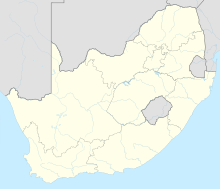Portal:Pan-Africanism/Selected history/7
| Battle of Isandlwana | |||||||
|---|---|---|---|---|---|---|---|
| Part of the Anglo–Zulu War | |||||||
 A depiction of Lt's Melvill and Coghill fleeing the Battle of Isandlwana with the Queen's Colour, taken from the Illustrated London News. | |||||||
| |||||||
| Belligerents | |||||||
|
| Zulu Kingdom | ||||||
| Commanders and leaders | |||||||
|
Overall commander: Maj. Gen. Lord Chelmsford Subordinate commanders: Bvt. Lt-Col. Henry Pulleine † Bvt. Col. Anthony Durnford † |
Overall commander: Ntshingwayo kaMahole Khoza Subordinate commanders: Vumindaba kaNthati Mavumengwana kaNdlela Zibhebhu kaMapitha | ||||||
| Strength | |||||||
|
No.2 Column: British: 14 Native + colonial: c. 511 No.3 Column: British: 734 Native + colonial: c. 578 1,837 men total. In addition to the troops above, an indeterminate number of civilians (wagon drivers, servants, etc.) were also present. |
Zulu Impi: about 20,000 c. 10,000 to 15,000 engaged Reserve: 4,000 to 5,000 to Rorke's Drift | ||||||
| Casualties and losses | |||||||
|
Over 1,300 killed: 52 officers 727 British regulars 471 others including: 133 European Colonial troops 2 artillery pieces captured |
Approx. 1,000–2,500 killed 2,000 wounded. | ||||||
Location of Isandlwana in present-day South Africa | |||||||

The Battle of Isandlwana (alternative spelling: Isandhlwana) on 22 January 1879 was the first major encounter in the Anglo–Zulu War between the British Empire and the Zulu Kingdom. Eleven days after the British commenced their invasion of Zululand in South Africa, a Zulu force of some 20,000 warriors attacked a portion of the British main column consisting of about 1,800 British, colonial and native troops and perhaps 400 civilians. The Zulus were equipped mainly with the traditional assegai iron spears and cow-hide shields, but also had a number of muskets and old rifles. The British and colonial troops were armed with the modern Martini-Henry breech-loading rifle and two 7-pounder (3-inch, 76 mm) mountain guns deployed as field guns, as well as a Hale rocket battery. Despite a vast disadvantage in weapons technology, the Zulus defeated the British, killing over 1,300 troops, including all those out on the forward firing line.
The battle was a decisive victory for the Zulus and caused the defeat of the first British invasion of Zululand. The British Army had suffered its worst defeat against an indigenous foe with vastly inferior military technology.

